Abstract
1. Buprenorphine given intravenously (6 micrograms kg-1) was examined for its antinociceptive activity in unrestrained sheep using devices to measure thermal and mechanical thresholds. 2. The plasma levels of buprenorphine following intravenous injection over the time period of the antinociceptive testing were measured using a radioimmunoassay. 3. Buprenorphine produced a clear antinociceptive effect lasting for up to three and a half hours when measured by the thermal threshold test, but no detectable antinociception in the mechanical test. 4. The plasma levels of buprenorphine indicated that the drug was rapidly distributed in a manner not dissimilar to that reported in man, although individual animals showed a wide variation in some parameters. 5. When plasma levels of the drug were high (less than 700 pg ml-1) during the first sixty minutes, no antinociceptive activity in the thermal test could be detected, which may be due to the slow receptor kinetics shown by this drug.
Full text
PDF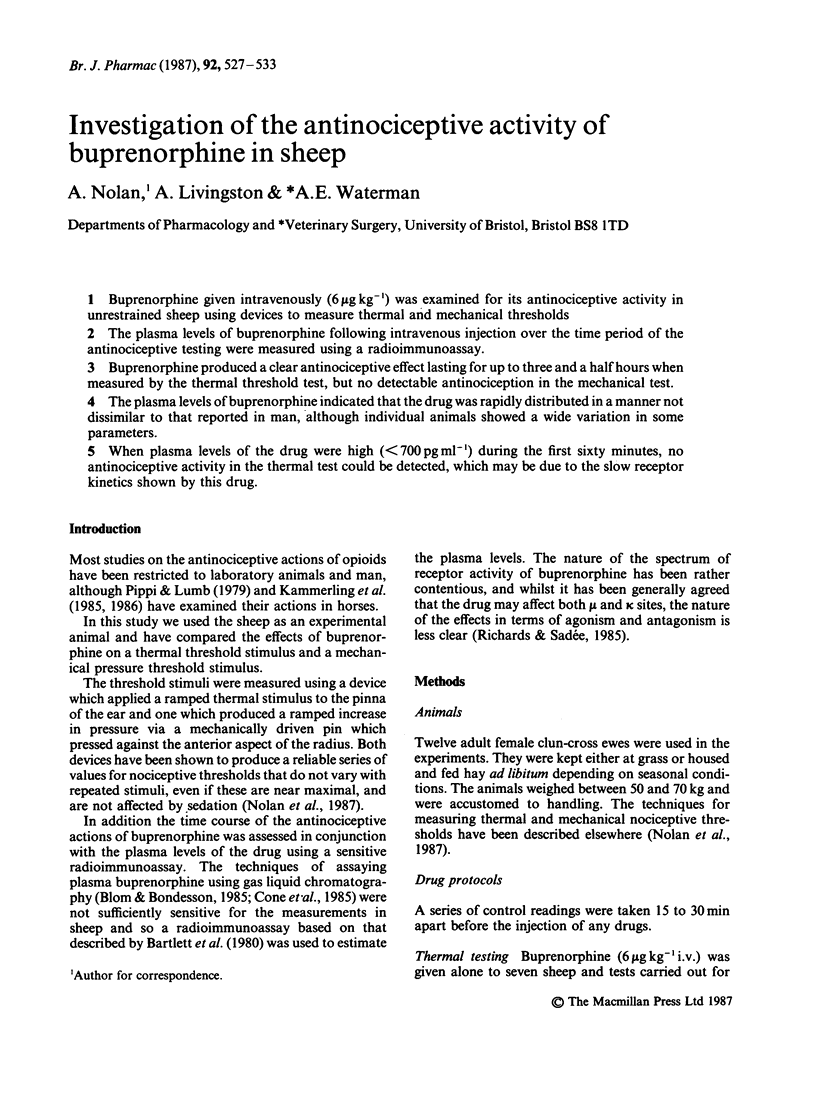
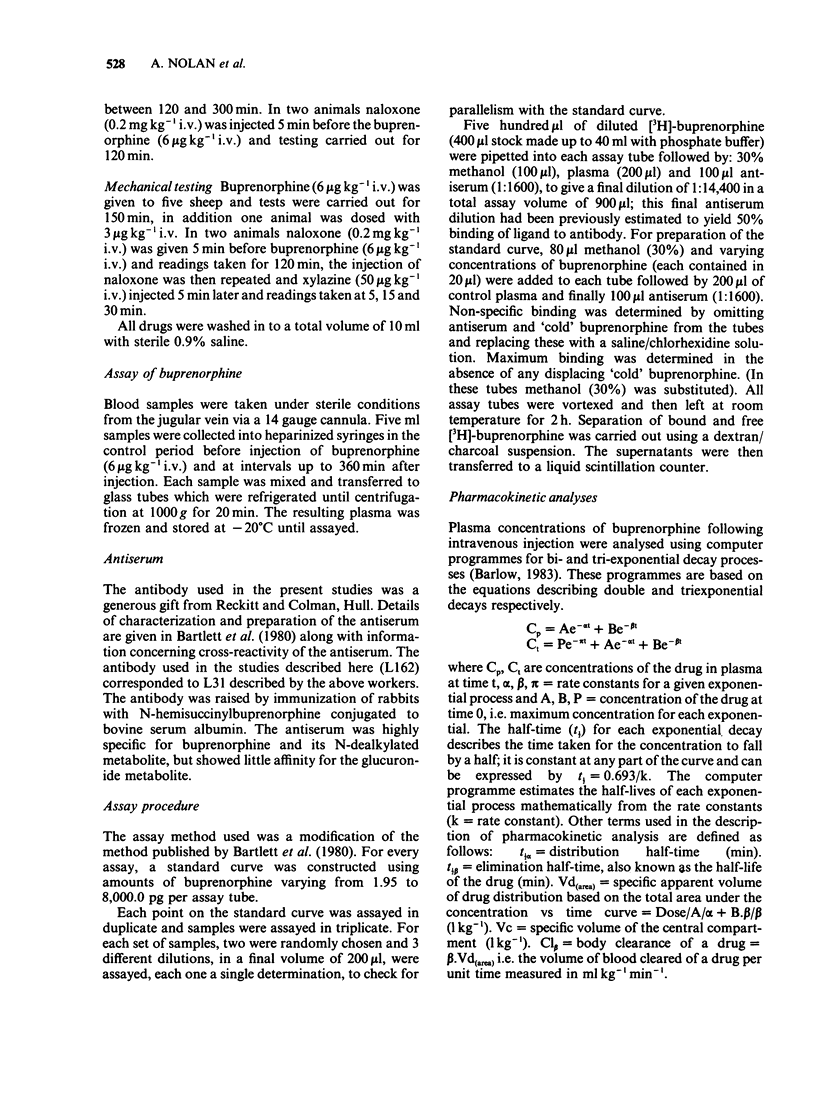
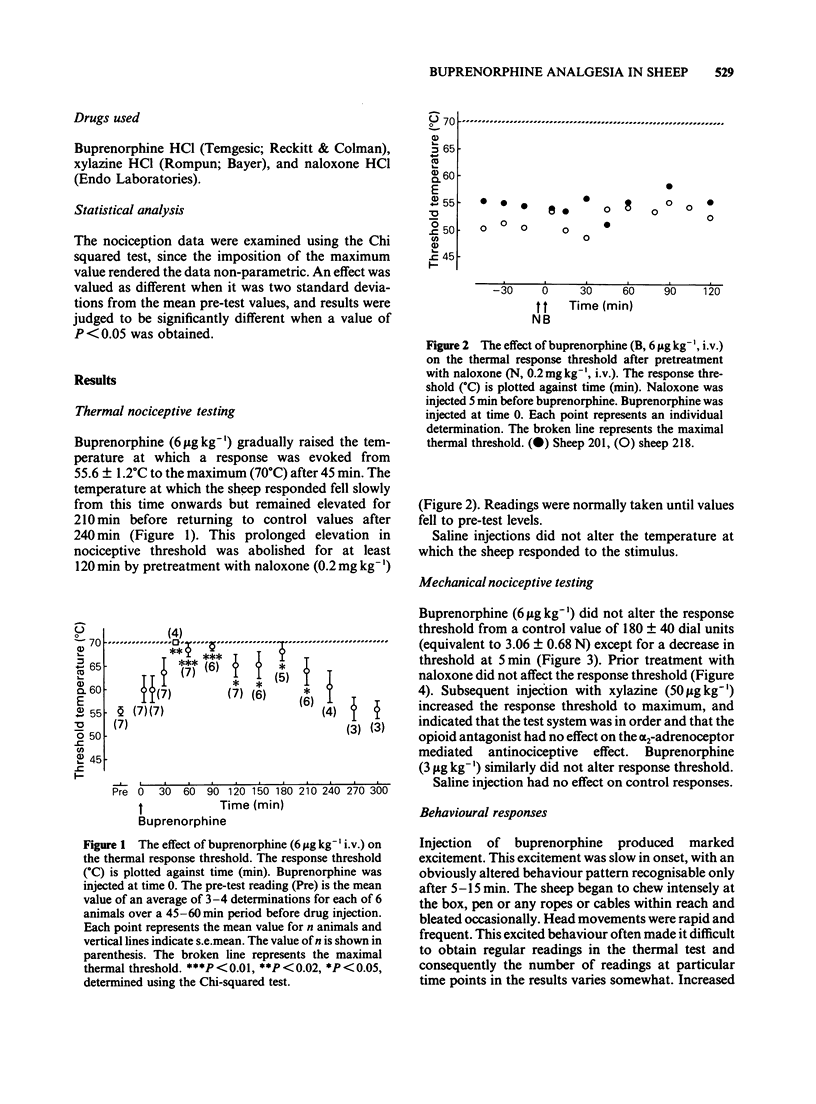
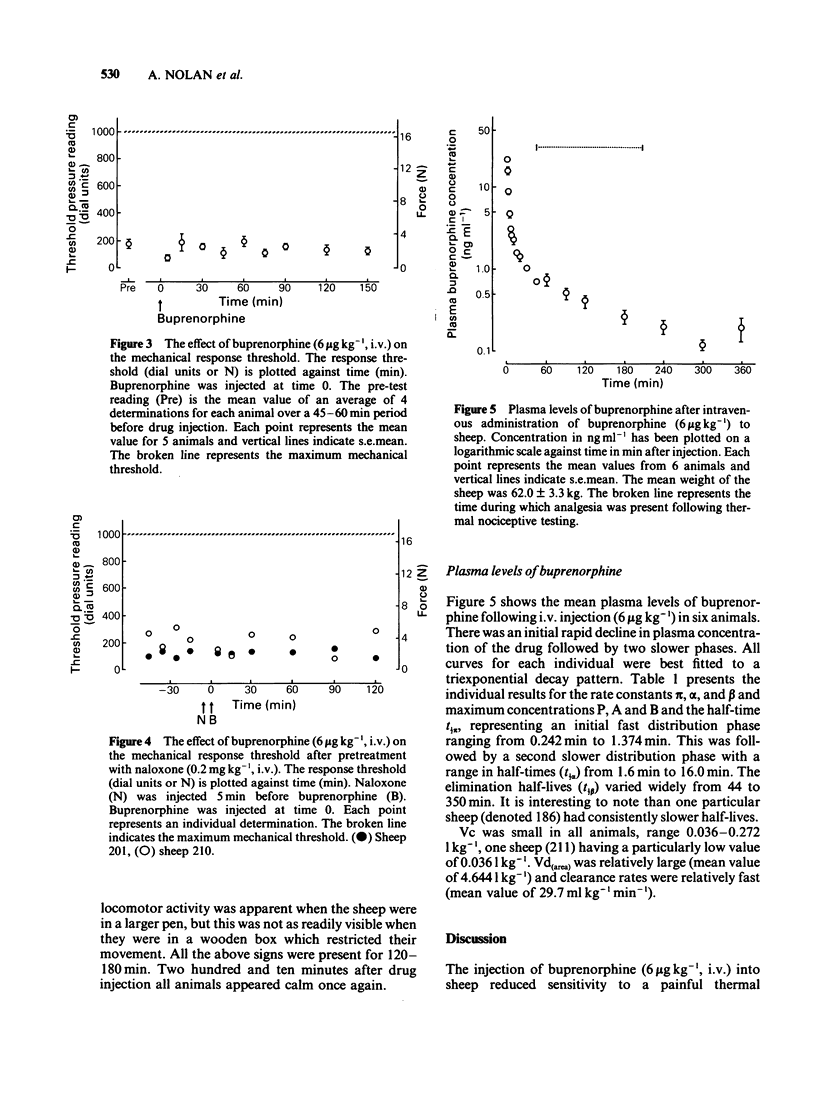
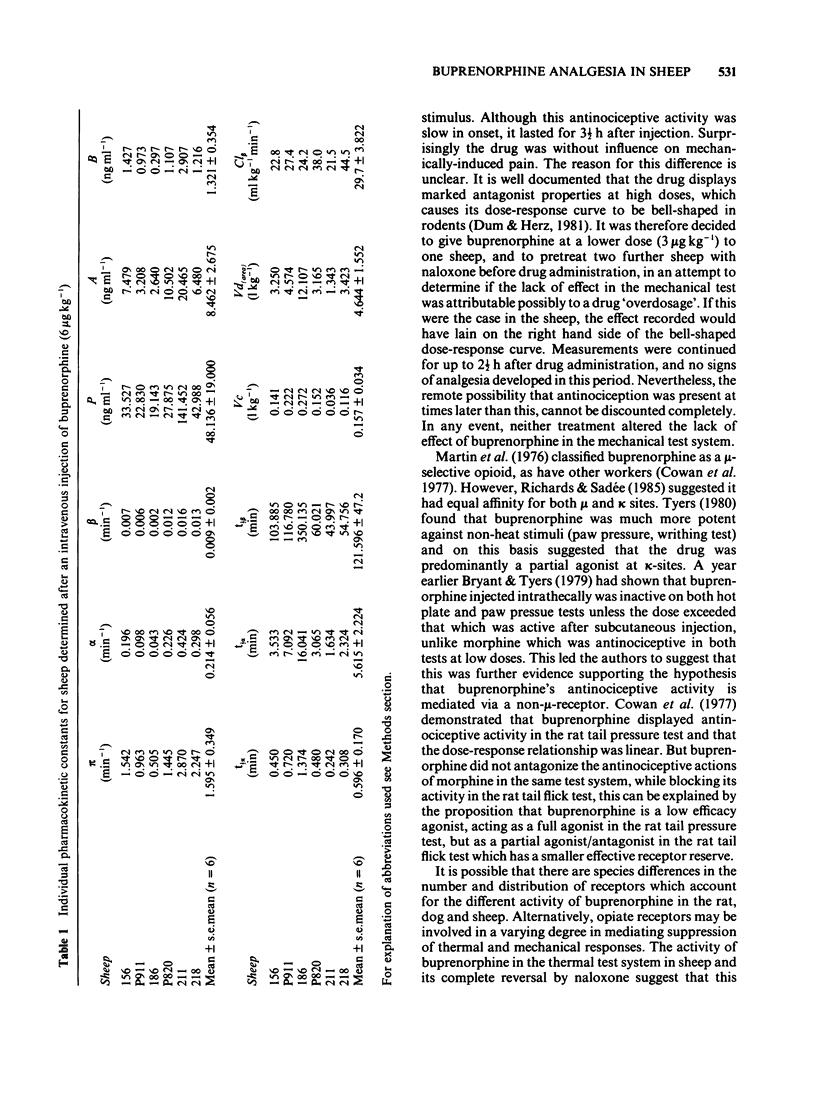
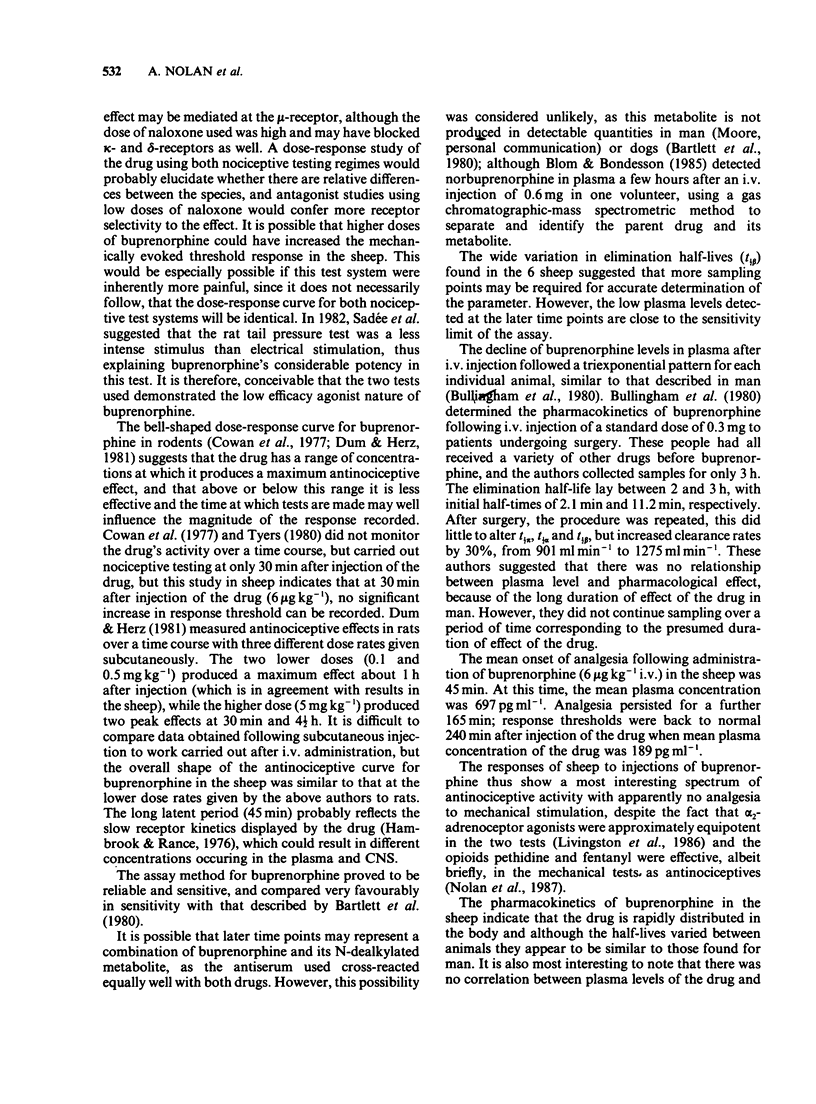
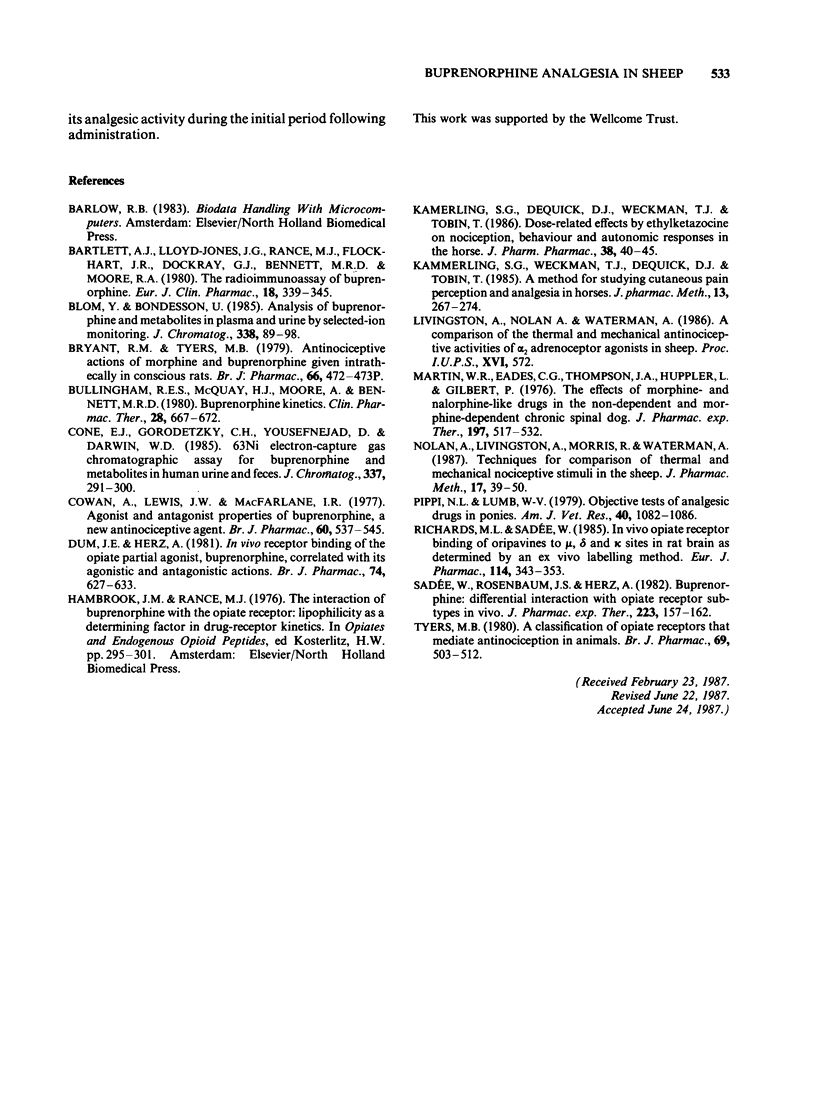
Selected References
These references are in PubMed. This may not be the complete list of references from this article.
- Bartlett A. J., Lloyd-Jones J. G., Rance M. J., Flockhart I. R., Dockray G. J., Bennett M. R., Moore R. A. The radioimmunoassay of buprenorphine. Eur J Clin Pharmacol. 1980 Oct;18(4):339–345. doi: 10.1007/BF00561392. [DOI] [PubMed] [Google Scholar]
- Blom Y., Bondesson U., Anggård E. Analysis of buprenorphine and its N-dealkylated metabolite in plasma and urine by selected-ion monitoring. J Chromatogr. 1985 Feb 27;338(1):89–98. doi: 10.1016/0378-4347(85)80073-6. [DOI] [PubMed] [Google Scholar]
- Bryant R. M., Tyers M. B. Antinociceptive actions of morphine and buprenorphine given intrathecally in conscious rats [proceedings]. Br J Pharmacol. 1979 Jul;66(3):472P–473P. [PMC free article] [PubMed] [Google Scholar]
- Bullingham R. E., McQuay H. J., Moore A., Bennett M. R. Buprenorphine kinetics. Clin Pharmacol Ther. 1980 Nov;28(5):667–672. doi: 10.1038/clpt.1980.219. [DOI] [PubMed] [Google Scholar]
- Cone E. J., Gorodetzky C. W., Yousefnejad D., Darwin W. D. 63Ni electron-capture gas chromatographic assay for buprenorphine and metabolites in human urine and feces. J Chromatogr. 1985 Feb 8;337(2):291–300. doi: 10.1016/0378-4347(85)80042-6. [DOI] [PubMed] [Google Scholar]
- Cowan A., Lewis J. W., Macfarlane I. R. Agonist and antagonist properties of buprenorphine, a new antinociceptive agent. Br J Pharmacol. 1977 Aug;60(4):537–545. doi: 10.1111/j.1476-5381.1977.tb07532.x. [DOI] [PMC free article] [PubMed] [Google Scholar]
- Dum J. E., Herz A. In vivo receptor binding of the opiate partial agonist, buprenorphine, correlated with its agonistic and antagonistic actions. Br J Pharmacol. 1981 Nov;74(3):627–633. doi: 10.1111/j.1476-5381.1981.tb10473.x. [DOI] [PMC free article] [PubMed] [Google Scholar]
- Kamerling S. G., Dequick D. J., Weckman T. J., Tobin T. Dose-related effects of ethylketazocine on nociception, behaviour and autonomic responses in the horse. J Pharm Pharmacol. 1986 Jan;38(1):40–45. doi: 10.1111/j.2042-7158.1986.tb04464.x. [DOI] [PubMed] [Google Scholar]
- Kamerling S. G., Weckman T. J., DeQuick D. J., Tobin T. A method for studying cutaneous pain perception and analgesia in horses. J Pharmacol Methods. 1985 Jun;13(3):267–274. doi: 10.1016/0160-5402(85)90027-0. [DOI] [PubMed] [Google Scholar]
- Martin W. R., Eades C. G., Thompson J. A., Huppler R. E., Gilbert P. E. The effects of morphine- and nalorphine- like drugs in the nondependent and morphine-dependent chronic spinal dog. J Pharmacol Exp Ther. 1976 Jun;197(3):517–532. [PubMed] [Google Scholar]
- Nolan A., Livingston A., Morris R., Waterman A. Techniques for comparison of thermal and mechanical nociceptive stimuli in the sheep. J Pharmacol Methods. 1987 Mar;17(1):39–49. doi: 10.1016/0160-5402(87)90035-0. [DOI] [PubMed] [Google Scholar]
- Pippi N. L., Lumb W. V. Objective tests of analgesic drugs in ponies. Am J Vet Res. 1979 Aug;40(8):1082–1086. [PubMed] [Google Scholar]
- Richards M. L., Sadée W. In vivo opiate receptor binding of oripavines to mu, delta and kappa sites in rat brain as determined by an ex vivo labeling method. Eur J Pharmacol. 1985 Aug 27;114(3):343–353. doi: 10.1016/0014-2999(85)90379-6. [DOI] [PubMed] [Google Scholar]
- Sadée W., Rosenbaum J. S., Herz A. Buprenorphine: differential interaction with opiate receptor subtypes in vivo. J Pharmacol Exp Ther. 1982 Oct;223(1):157–162. [PubMed] [Google Scholar]
- Tyers M. B. A classification of opiate receptors that mediate antinociception in animals. Br J Pharmacol. 1980 Jul;69(3):503–512. doi: 10.1111/j.1476-5381.1980.tb07041.x. [DOI] [PMC free article] [PubMed] [Google Scholar]


